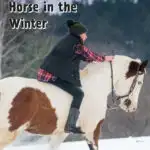For many of us, winter is a rest cycle for us and our equestrian activities. Snuggled up inside, staying cozy in our heated homes, most of us tend to let our horses grow round hay-bellies as they eat their way through the coldest months. This is especially true in the brutally cold and icy weather that accompanies winter months in many parts of the world.
For some riders though, horseback riding is a year-round pursuit. Riding and handling our horses regularly throughout the winter can be an excellent way to maintain the condition and training of our horses as well as our own skill and muscle tone as riders. However, winter riding isn’t accessible to everyone. Riding through the winter in many areas requires expensive indoor riding arenas and winter horse facilities. Thankfully, there are many activities you can do with a horse in the winter even if you don’t have an indoor riding arena or a winterize riding area.
In this article, we will discuss some ideas for things to do with your horse in the winter to keep you busy, bonded, and ready to hit the ground running when the spring thaw eventually comes.
Try Training your Horse for Skijoring
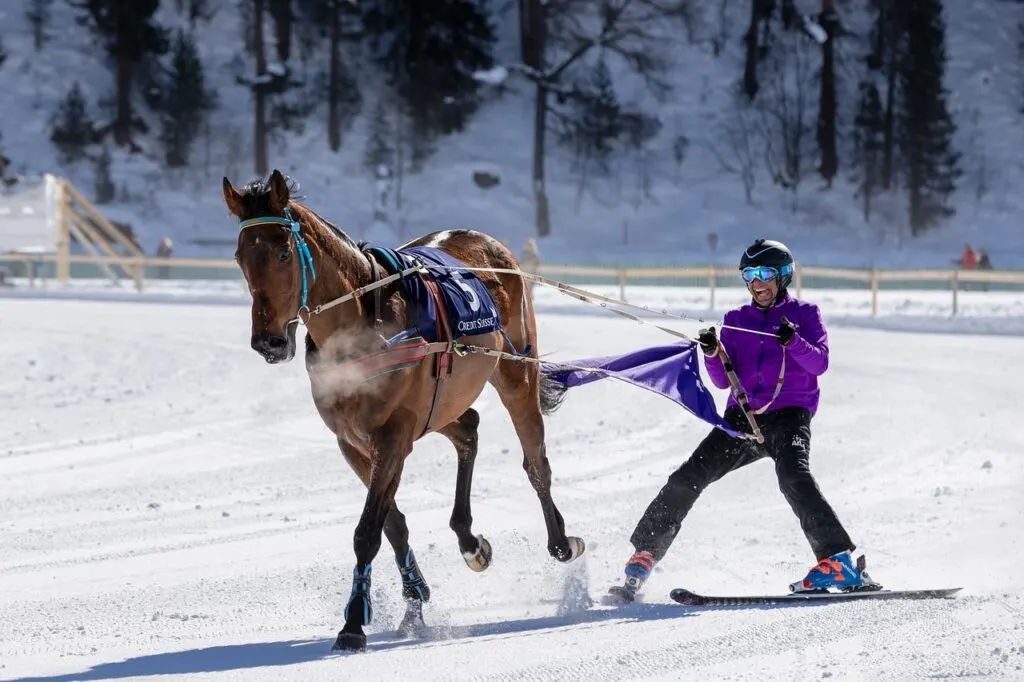
In the cold northern climates of Norway, an obscure but devoted-following horse sport has developed: Skijoring. Horse Skijoring is, essentially, horse skiing. It involves training a horse to wear a light harness while being line-driven. A handler then attaches lightweight skis to their feet and skis along behind their horse as it walks or trots through the snow. Skijoring isn’t just fun, it’s a great way to help your horse stay in good physical condition through the coldest winter months.
To train your horse to ski, it’s best to consult with a professional horse trainer, however, you can get a head start in the summer by teaching your horse to drag a dummy cart as if you were preparing to teach the horse to pull a cart.
Note: special equipment may be required for this winter activity with horses: including but not limited to: horseshoes with special traction for snow, a helmet, skijoring harness, and skis.
Practice Riding Bareback

In the coldest winter months, one of the hardest parts of motivating ourselves to get in the saddle is numbing cold of trying to tack a horse up. Stiff frozen leather and icy buckles make tacking up a hand numbing expereince before you ever even get in the saddle!
Because of this, one especially-fun winter horse activity is bareback riding. Bareback riding refers to riding your horse with no saddle. It’s quite a challenge the first few times but can help develop a more secure seat and better balance for when you return to writing with the saddle.
What makes bareback riding perfect for winter? Horses’ bodies are warm and well insulated. By removing the padding and leather horse tack between you and your horse, you’ll feel your horse’s body heat helping to maintain your own body temperature while you ride in the winter.
If you are new to bareback riding, you may want to buckle a strap around your horse’s neck, if you find yourself losing your balance, focus on sitting deep and tall and grasp the strap (or a chunk of your horse’s mane) to stabilize yourself.
New or novice riders tend to try and stabilize themselves via the reins of when bareback riding for the first time, this is painful for a horse and may cause unpleasant reactions – so make sure that if you need extra support you have support available other than horse reins. Riding lessons can help develop the muscle and balance needed to safely enjoy winter bareback horseback riding.
Train a trick
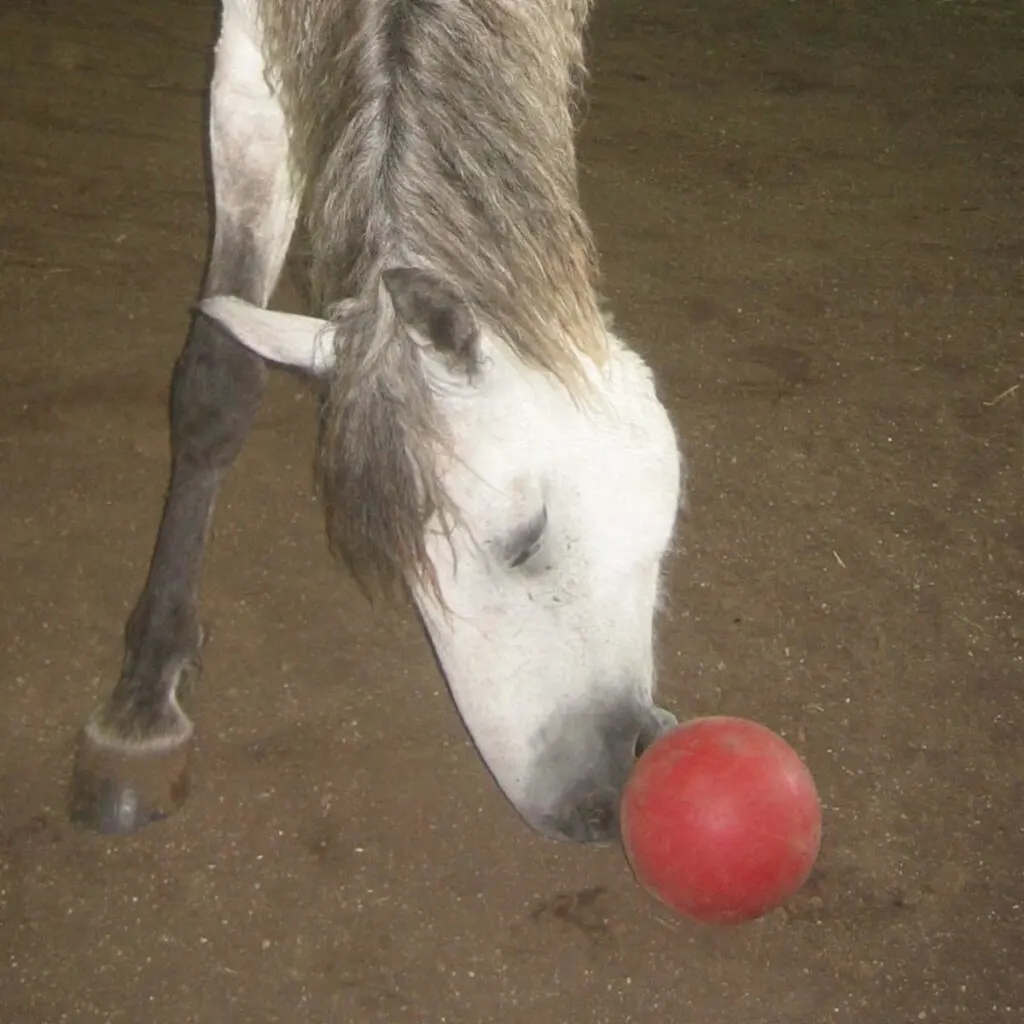
When it’s cold outside and you’re looking for an activity you can do with your horse while staying in the barn (or even their own stall!) trick training is a great activity.
Training simple tricks is fun for both horse and handler and can help promote bonding so that when you do mount up again in the spring, you and your horse will be even more in sync. Simple tricks you can teach your horse in the winter include teaching them to perk their ears for photos on command, teaching them to fetch, or teaching them to square up and stand for a halter class judges inspection.
Clicker training tends to work best for this type of trick training but if you don’t have a clicker traditional methods can work. Just like training a dog to sit, teaching a horse involves simply prompting or waiting for the desired behavior, marking it, rewarding it, and repeating the process over and over to train your horse to do a trick on command.
Short sessions and many repetitions are the keys to training horses to do tricks- making this a perfect fun thing to do with a horse in the winter months when you only have a few minutes to spend with your horse before you get too cold and have to retreat to indoors.
Make Something for your Horse
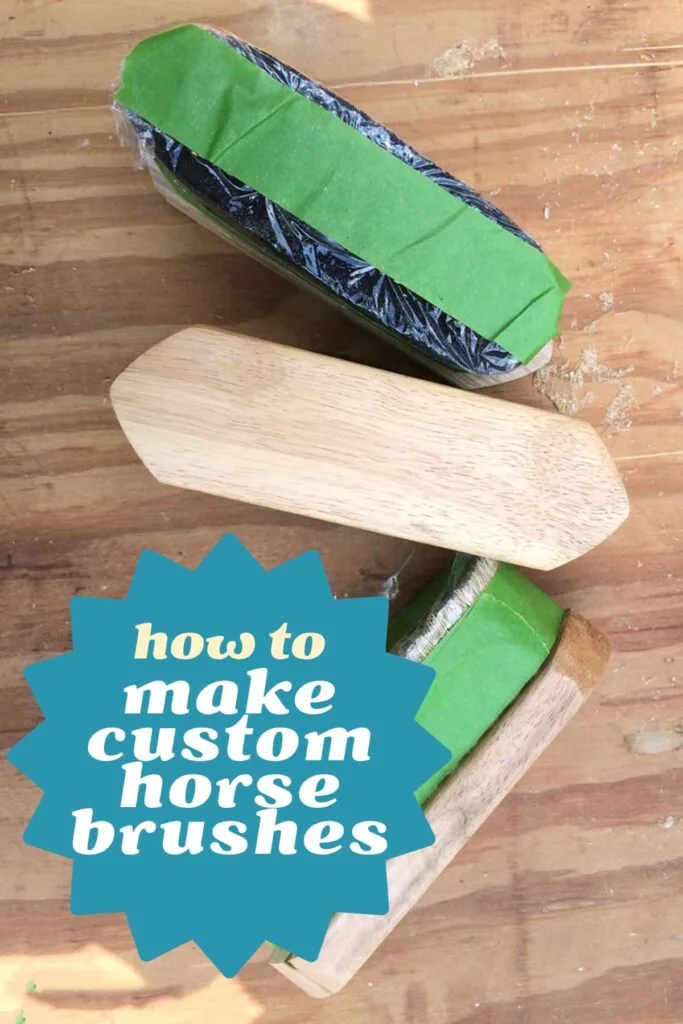
The coldest winter months can be a great time for activities for horse activities that don’t involve being outdoors. One of my favorite things to do in the winter months is to make things for the horses!
When fall horse shows with costume classes come around at the end of the summer, you’ll probably be too busy enjoying your horse to make a great, blue ribbon-winning costume for a costume class- but winter is the perfect time to think ahead for what you might envision for an epic costume class next fall.
By planning and creating in the winter, you’ll have all spring and summer to train and desensitize your horse to wearing any “weird” aspects of the costume. By the time fall comes around you’ll be ready to knock the socks off of your competition in costume classes. Get started now with our guide to making a simple renaissance knight horse costume.
Not into horse shows or complex or costume classes? No problem! There are so many things you can make for your horse in the winter. You can customize horse brushes for your and your friends’ horses. You can even make simple items of tack – like lunge lines, lead ropes, and even halters with just a few tools and some practice. Save money on buying new tack in the spring by learning to make your own equipment in the cold of winter when you can’t do activities with your horse due to weather or limited facilities.
Learn to repair your own horse tack
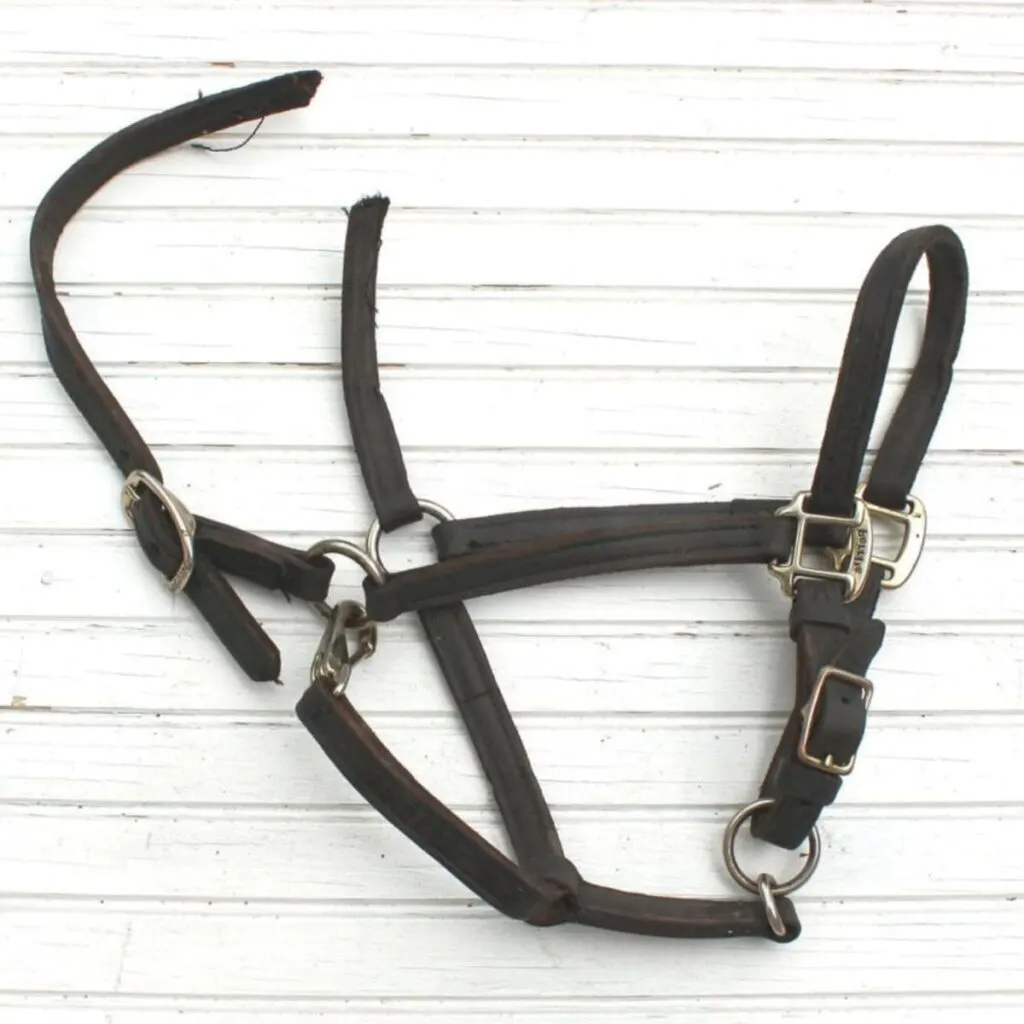
If the weather has you out of the saddle due to cold, wet weather, it’s a great season to bring all of your tack indoors, do a deep cleaning and inspection of all of your equipment, and practice making repairs.
In my experience, as a former tack store owner, people throw out repairable tack all the time – sometimes even the repairs that look difficult to make are actually easy and straightforward. Modern advances in equipment design even make it possible to replace broken snaps, buckles, and rings without needing a heavy-duty sewing machine. Before you throw out a halter with a broken crown, learn to repair it using our tutorial.
Torn blankets and saddle pads can be re-stitched, fraying leather halters can be riveted, frayed nylon can be melted into a solid edge, and many other simple repairs can be taken care of at home with inexpensive, basic tools and hardware. Deep cleaning and polishing horse bits, de-matting your fleece saddle pads, and washing hard to clean western saddle pads, can also help have you ready to ride when the spring thaw comes.
Practice your horses ground manners
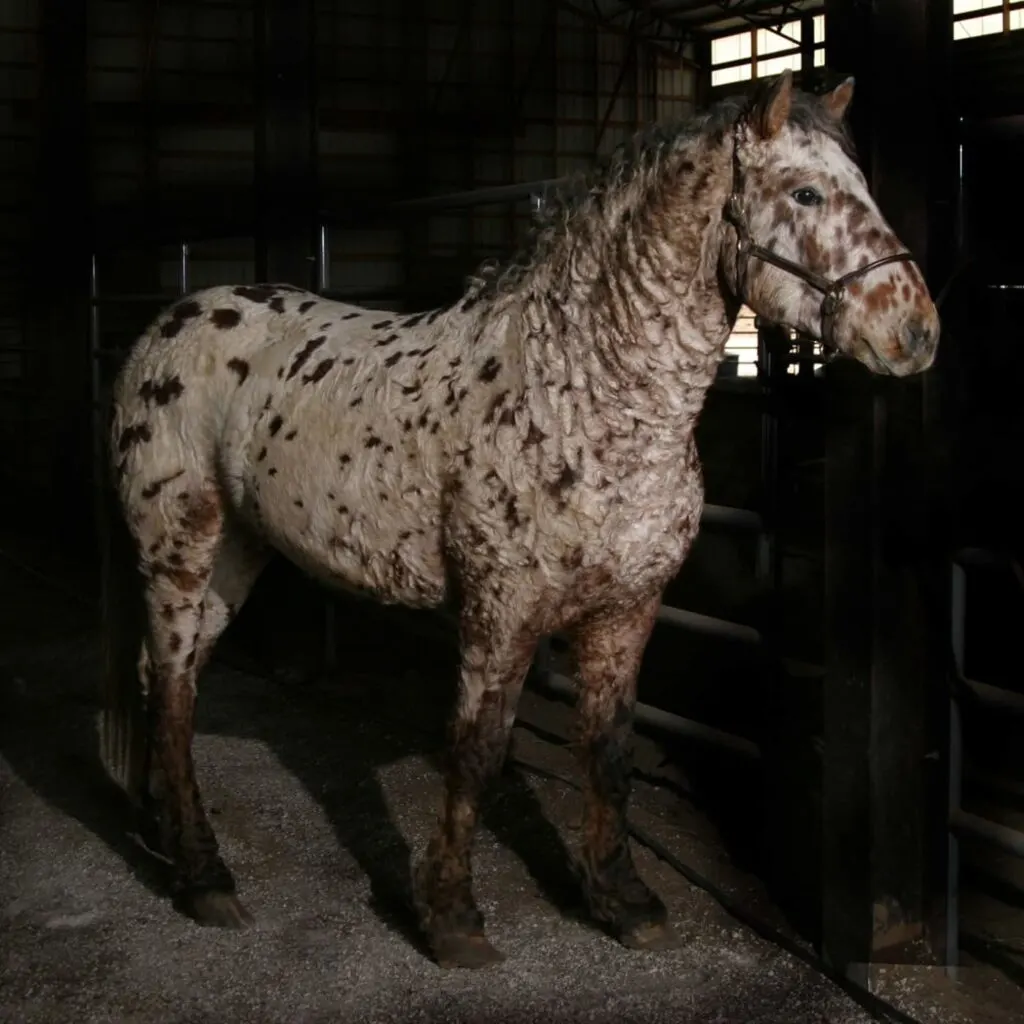
Just because winter is often time-off for horses and riders doesn’t mean that your horse’s training has to stop. Some horses need consistent handling more than others through the winter.
Although it seems to be a personality trait that varies widely from individual horse to individual horse, some horses can be tacked up for the first time each spring and handled and ridden with docility and obedience as if they been ridden all winter, while other horses, if not handled consistently, can act like broncs fresh from the range when they are tacked up for the first time in the spring.
Consistently handling your horse through the winter is one activity you can do with your horse when you can’t ride that will help ensure that when you do get back up in the saddle, your horse will be obedient and easy to ride. Simply catching your horse from the pasture, leading them into the barn, cross tying them, grooming them, checking their hooves, and having them practice being tied up for a few minutes is all it takes for many horses to stay consistent in their good ground manners and easy handling.
As a bonus, catching your horse and bringing it into the barn for pleasant things – like grooming, scratches, treats, or feeding, can make your horse easy to catch when it comes time for summer riding.
Focus on Bonding with your Horse

Speaking of bonding with your horse, winter horse activities are a great time to invest in building trust with your horse. Although many riders think that they need to be in the saddle to grow their horse’s responsiveness to cues, and the partnership between themselves and their horse, the truth is that much of this work is best done on the ground.
If winter weather has you out of the saddle and looking for things to do with your horse, consider seeking out bonding promoting activities with your horse. There are many things you can do with a horse – in and out of the saddle – to help build your relationship, trust, and with it your competitive partnership or increased ability to trust each other on the trail or at work. Check out our article on ways to bond with a horse for more tips on specific activities to help build your relationship with your horse this winter.
Condition your horses mane and tail
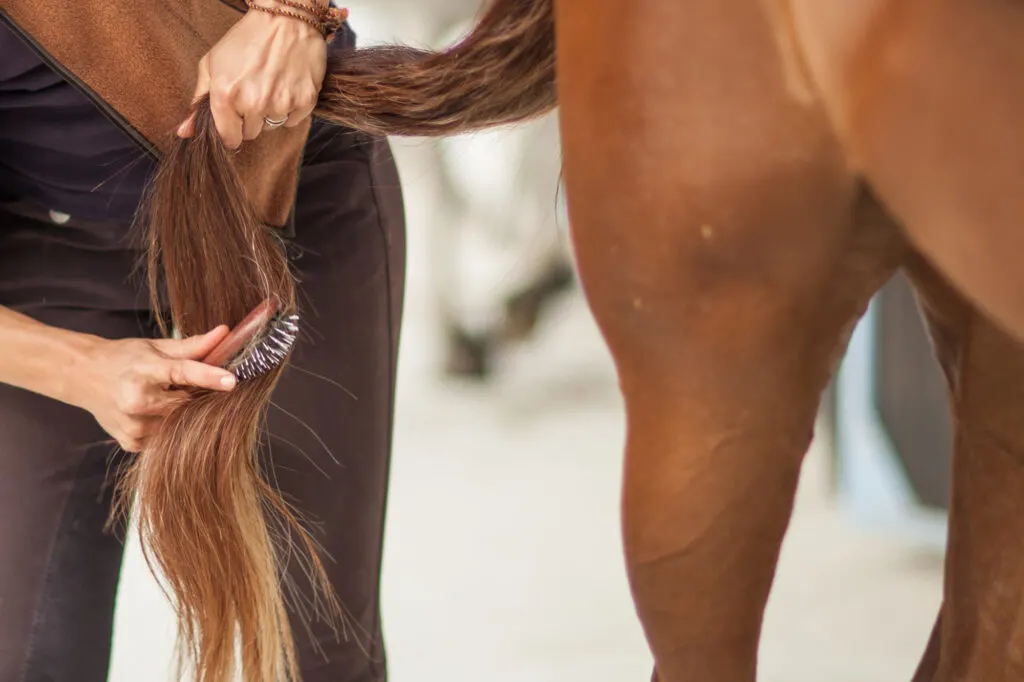
You may be sidelined from the show ring for the winter, but even without an indoor training facility one of the best things to do with a horse in the winter months is to conditioning its tail to prepare for the upcoming horse show season.
One of the easiest ways to do this is by regular grooming and conditioning of your horse’s mane and tail through the winter. Even though you may not be riding, your horse is still growing mane and tail. Helping it grow in thicker, fuller, and brighter can be a way to get an edge on your turnout for spring horse shows.
Using a tail bag in the winter can help manes and tails grow, be protected from winter tangles, brambles, and hay feeders, and help prevent discoloring of the tail from dirt, UV light, or urine. Follow our instructions for conditioning a tail, including monthly hot oil treatments, and by spring your horse’s tail will be soft, bright, and luxurious – ready for the show ring.
Bone up on braiding

Did you know that people who braid manes professionally at horse shows can make up to $80 per horse and can do 6-10 in one day? (Here’s a little context on those figures) Even if you never expect to show your horse in the type of horse shows that require mane braiding, braiding your horse’s mane in the winter is one of many fun things to do with your horse in the winter to hang out with your horse, practice a skill, and get good enough at braiding to start braiding professionally next season.
Practice and watching videos is the best way to learn- and thankfully, learning to braid horses’ manes and tails has never been easier. Countless videos on YouTube carefully instruct novice at various methods for braiding professional quality horse mane braids for competition. With time and practice (both things that wintertime can offer) you can be ready to start building a name for yourself as professional a professional braider by spring.
tl;dr
When it’s too cold to ride, there are many useful, fun, or interesting things to do with your horse in the winter. Winter horse activities range from horse-skiing to trick training, to bonding, grooming, braiding, and investing time in tack repair and horse show prep. These are just a few of the activities you can do with a horse in the winter.
For even more ideas of things to do with a horse when you can’t ride, check out our article. For even more ideas, especially for younger horses, see our article on things to do with a yearling horse.
Even though winter may have you sidelined and out of the saddle due to snow, ice, sleet, or just lack of a sheltered place with good footing to ride, you can still spend quality time with your horse, enjoy equestrian activities, and invest in your performance and turnout at next seasons equestrian events.

